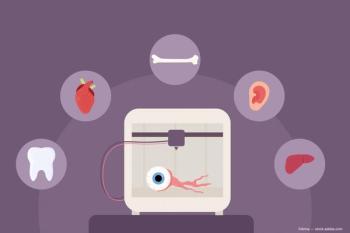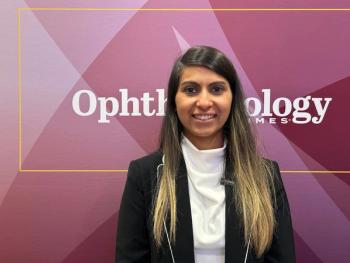
- Ophthalmology Times: March 15, 2021
- Volume 46
- Issue 5
SMILE offers low enhancement rate after nomogram adjustment
Refractive surgery for treating myopia is linked to low rates of regression, enhancement.
This article was reviewed by Sung Min Kim, MD
Study results from a comparison of the LASIK, PRK, and SMILE procedures showed that the least amount of myopic regression occurred with SMILE, regardless of the degree of myopia.
Sung Min Kim, MD, credited this result to proper adjustment of the surgical nomogram, which resulted in an exceptionally low enhancement rate.
SMILE is a single-step, flapless, femtosecond laser surgery. This study result showed SMILE causes less dry eye and lower induction of aberrations postoperatively compared with LASIK and PRK.
Related:
Kim pointed out that in addition, the long-term visual outcomes were also comparable among the 3 surgeries.
Enhancement rates after SMILE are low, but the need remains; In recent studies, enhancement percentages ranged from 2.2% to 2.9% in association with older patient age and higher degrees of myopia.
However, Kim reported that his enhancement rates were considerably lower after 10 years’ experience with SMILE.
The study
The investigators, Kim and Hyung-Jin Koo, MD, undertook a retrospective study to assess the enhancement and regression rates after LASIK, PRK, and SMILE and assess how each performed with varying degrees of myopia.
In addition, the investigators wanted to determine the risk factors for enhancement procedures. Both physicians are from the Nunemiso Eye Clinic in Seoul, South Korea.
Related:
The investigators reviewed all refractive cases performed at the Nunemiso Eye Clinic from January 2010 to November 2019 to treat myopia or myopic astigmatism.
They also measured uncorrected and corrected distance visual acuity, spherical equivalent (SEQ), and central corneal thickness (CCT) both preoperatively and postoperatively.
The preoperative data included intraocular pressure, anterior chamber depth, pupillary size, and high-order aberrations.
The parameters collected intraoperatively were the optical zone, lenticular diameter and thickness, ablation depth, residual stromal bed (RSB), and the percentage of tissue altered (PTA).
Myopic regression
In this study, the investigators defined myopic regression as a residual myopic error of –1.0 D or more.
Related:
Patients were candidates for a second surgery when the residual myopic error was –1.0 D or more, the uncorrected vision was less than 20/30, or patient satisfaction was low despite a visual acuity of 20/25.
The patients were divided into 3 groups based on the preoperative SEQ. Mild myopia, defined as a SEQ of –3.0 D or less; moderate myopia defined as –3.0 D < SEQ < –6.0 D or less; and high myopia, defined as –6.0 D < SEQ < –9.0 D or less, Kim explained.
The VisuMax femtosecond laser (Carl Zeiss Meditec) was used for the SMILE and Femto-LASIK procedures, excimer lasers (MEL 80, Carl Zeiss Meditec) (Allegretto Wave EYE-Q, Alcon) for PRK and LASIK procedures, and the One Use-Plus microkeratome (Moria) excimer laser was used to make the LASIK flaps.
Results
A total of 63,416 cases comprised the SMILE (79.4%), PRK (14.9%), and LASIK (5.7%) cases.
The regression rates of all subjects among the SMILE, PRK, and LASIK cases were 1.3%, 3.0%, and 3.8%, respectively, Kim said.
Related:
When the cases were divided by the degree of myopia, the respective regression percentages in the mild myopia group (12,369 cases) were 0.3%, 1.5%, and 1.9%; in the moderate myopia group (35,410 cases), 0.6%, 2.5%, and 3.5%; and in the high myopia group (15,637 cases), 3.8%, 4.9%, and 6.7%.
“SMILE was associated with the lowest myopic regression rate postoperatively among all the myopic ranges,” Kim said. “The rate of myopic regression increased significantly to 3.8% in the high myopia group even after the SMILE procedure was performed.”
Patient satisfaction
The overall reoperation rate was a focus for the investigators. Ultimately, it is a serious impact for patients who would then have to endure a second procedure if the first result is not up to the expectations.
According to Kim, the overall reoperation rates in the SMILE, PRK, and LASIK patients, respectively, were 0.3%, 1.1%, and 1.2%. The average time to an enhancement was 774.5 days.
The factors that were identified as significantly associated with enhancement surgery were older age, higher preoperative SEQ, thinner preoperative CCT, small optical zone, a large amount of ablation, thin postoperative RSB, and high PTA.
Related:
When 50,336 SMILE cases were reviewed separately, older age, SEQ, smaller lenticule, thicker lenticule, thin postoperative RSB, and higher PTA were significant factors associated with an enhancement.
Nomogram adjustment
Kim and colleagues began performing the SMILE procedure in 2012, and the overall enhancement rate for SMILE performed over 8 years was 0.34%.
Although only one-third of the SMILE procedures were performed during the first 4 years, more than half of the enhancements were done during that time.
“The need for enhancements in most cases resulted from undercorrection caused by the imperfect nomogram,” Kim said.
From 2017 onward, despite a substantial increase in SMILE procedures performed, the enhancement rate dropped.
“At that time, the SMILE nomogram was set, and SMILE Xtra or Implantable Collamer Lens [Visian ICL] implantation has been performed since 2016 for patients with extremely high myopia,” said Kim.
Related:
Adjustment of the nomogram for SMILE resulted in a very low enhancement rate even during long-term observation.
The possible risk factors for an enhancement procedure include high preoperative myopia, small lenticular diameter, thick lenticule, thin RSB, and a high PTA.
Conclusion
Kim concluded that the numbers of regression and enhancement cases could vary depending on the study setting, and the retrospective design of this study may be considered a limitation.
“However, considering the very long-term large number of analyses, our review is very meaningful for comparing the outcomes of the 3 refractive operations and determining the long-term safety,” Kim explained. “SMILE was shown to be a safe refractive surgery for patients with myopia that is associated with low rates of regression or enhancement.”
--
Sung Min Kim, MD
e:[email protected]
Kim has no financial interest in this subject matter.
Articles in this issue
over 4 years ago
Seeking a new frontier with intraoperative OCTover 4 years ago
IRISS registry study offers real-world outcomesover 4 years ago
New options continue to fill sustained drug delivery pipelineover 4 years ago
Intracanalicular dexamethasone insert offers hands-free therapyover 4 years ago
Athletes and doctors: not that differentNewsletter
Don’t miss out—get Ophthalmology Times updates on the latest clinical advancements and expert interviews, straight to your inbox.
















































.png)


